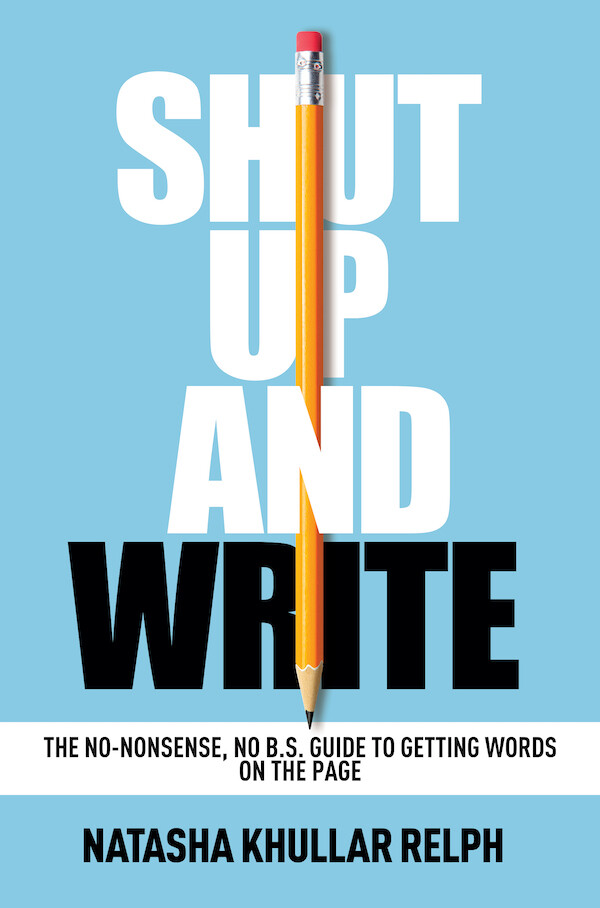
The most prolific and productive writers have a few traits in common.
Writers write. And productive writers write routinely, efficiently, and while having a whole lot of fun.
In the decade that I’ve been writing and interacting with writers, I’ve found that the most prolific and productive writers have a few traits in common.
Do you share them?
1. When they’re at work, they’re exclusively at work
Productive writers don’t worry about the kids, they don’t get distracted by the pile of dishes or laundry and they don’t schedule errands for the days on which they’ve got big deadlines. More importantly, when they’re working, they don’t log on to Twitter, don’t engage in political arguments, and don’t find excuses to avoid writing. (Read this post for 61 ways to remain productive when you work from home.)
I do, routinely, log on to all my social media networks, but I don’t have them open all hours of the day. Nor do I log on when I’m trying to focus or concentrate. If you want to be prolific and, therefore, productive, use social media for a five or ten-minute palette cleanser, but don’t get so sucked in that you lose entire hours or days to it.
2. They set out blocks of time
The myth tells of writers sitting at their desks at 9 in the morning and not moving their butts out of the chair until it’s 5 p.m. and time for a break. I mean, that’s the only way someone can write 5,000 words a day, right?
Not really.
In my book Shut Up and Write: The No-Nonsense, No B.S Guide to Getting Words on the Page, I talk about my trick, which is to block out chunks of dedicated time for each of my tasks and then do them for that limited period of time. These days, even when I feel like I’ve got 4,000 words of the novel in me, I might just stop at 3,000 so that I’ve got enough energy and reserve left over for the next day. Otherwise, I’m writing 4,000 words one day and absolutely none for the rest of the week, which makes coming back to the project that much harder.
Set checks and balances, and work on different projects in different slots of time. Enough that you keep things moving, but not so much that a project bores you to death.
3. They plan and organize
I know, I know, the dreaded O word. I have a step-by-step absolutely anal organization system, but I swear it saves me so much time because I know exactly what the steps involved are in a certain project and what I need to do next.
It’s so easy to look at a big project, for example, “write first draft of story for New York Times” and get so intimidated by the work that all you do is sit around in analysis paralysis.
In his book Getting Things Done, David Allen says you have to know the next step for everything you need to do. Let’s say you need to buy insurance for your car. “Buying insurance” is a mammoth task, which is why you probably keep procrastinating on doing it. Instead, he suggests you further divide that task into sub-tasks in such a way that you know exactly what you need to do next, which in this case would be: call insurance companies and ask for rates.
Be specific. Put things on your to-do list that you can actually DO.
“Call insurance companies” is something you can do immediately. “Buy insurance” isn’t.
4. They get it done
Yes, there’s a lot of thinking and staring into space involved in our work, but there’s thinking and there’s obsessing over all you need to do and never really getting around to doing it. Between thinking and just tackling it bit by bit, I’ll let you decide which is, by far, the saner option.
5. They do the important tasks first
The most important tasks, as it happens, are also typically the most boring or nerve-wracking. Do them first!
If you’re coming to your desk each day and seeing a to-do list that makes you want to take a hike, just tackle some of these difficult tasks in the morning and get them over with. That way, you can spend the rest of the day enjoying the work you have left over, instead of dreading what’s to come.
6. They create schedules and stick to them
Try this for yourself—work haphazardly one day and with a fixed schedule the next. Which one was the more productive day?
For 95% of people, the scheduled time is a much better use of their time and energy than a day when anything goes. I used to be very sceptical of schedules, but I’ve found that the more I set out a time for things, the more likely it is that they’ll get done.
7. They ask for help
No one can do it alone, not even you. And despite what your mother says, you are certainly not the best at everything. I’m sure you could be, but do you really want to be?
There are things you can and should ask for help with. This may mean hiring childcare for certain times in the day when you need a couple of uninterrupted hours of work, or hiring people to do research and transcription for you. Sure, you could spend three hours doing all the bookkeeping in your business, but wouldn’t you rather outsource that bit of work out to someone else and focus on what you really enjoy and are good at?
That’s the final secret productive writers share: Do what you excel at and what you enjoy, and if you’re lucky enough to afford it, leave the rest to someone else.
FREE RESOURCE:
MASTERCLASS: The $100K Blueprint for Multipassionate Writers
In this masterclass, I’m going to give you a step-by-step strategy to build multiple sources of income with your creative work in less than a year.
If you’ve been told you need to focus on one thing in order to succeed, this class will be an eye-opener. Watch it here.

Natasha Khullar Relph
Founder and Editor, The Wordling
Natasha Khullar Relph is an award-winning journalist and author with bylines in The New York Times, TIME CNN, BBC, ABC News, Ms. Marie Claire, Vogue, and more. She is the founder of The Wordling, a weekly business newsletter for journalists, authors, and content creators. Natasha has mentored over 1,000 writers, helping them break into dream publications and build six-figure careers. She is the author of Shut Up and Write: The No-Nonsense, No B.S. Guide to Getting Words on the Page and several other books.
Sign up for The Wordling
Writing trends, advice, and industry news. Delivered with a cheeky twist to your Inbox weekly, for free.
